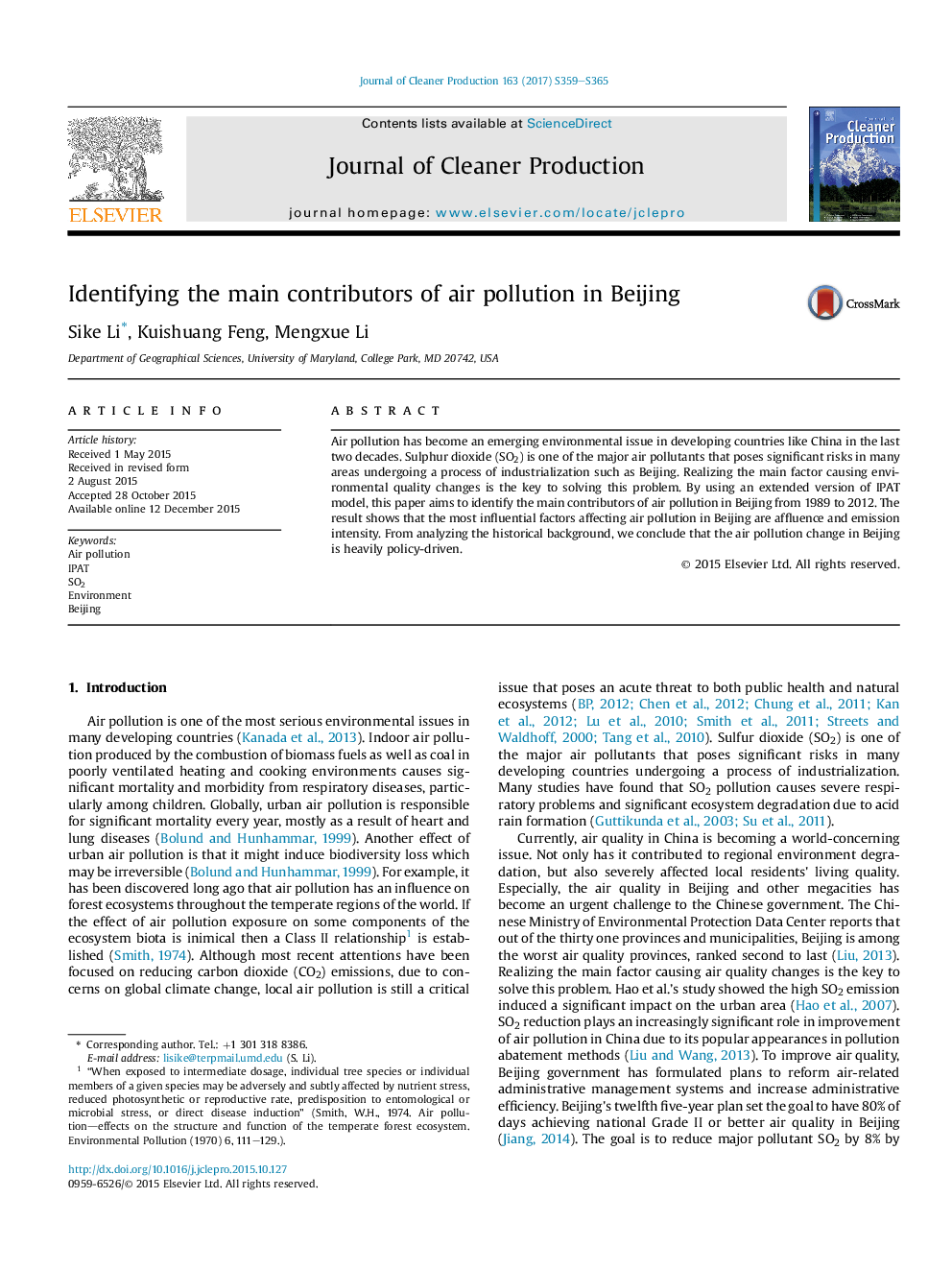| Article ID | Journal | Published Year | Pages | File Type |
|---|---|---|---|---|
| 5480553 | Journal of Cleaner Production | 2017 | 7 Pages |
Abstract
Air pollution has become an emerging environmental issue in developing countries like China in the last two decades. Sulphur dioxide (SO2) is one of the major air pollutants that poses significant risks in many areas undergoing a process of industrialization such as Beijing. Realizing the main factor causing environmental quality changes is the key to solving this problem. By using an extended version of IPAT model, this paper aims to identify the main contributors of air pollution in Beijing from 1989 to 2012. The result shows that the most influential factors affecting air pollution in Beijing are affluence and emission intensity. From analyzing the historical background, we conclude that the air pollution change in Beijing is heavily policy-driven.
Related Topics
Physical Sciences and Engineering
Energy
Renewable Energy, Sustainability and the Environment
Authors
Sike Li, Kuishuang Feng, Mengxue Li,
